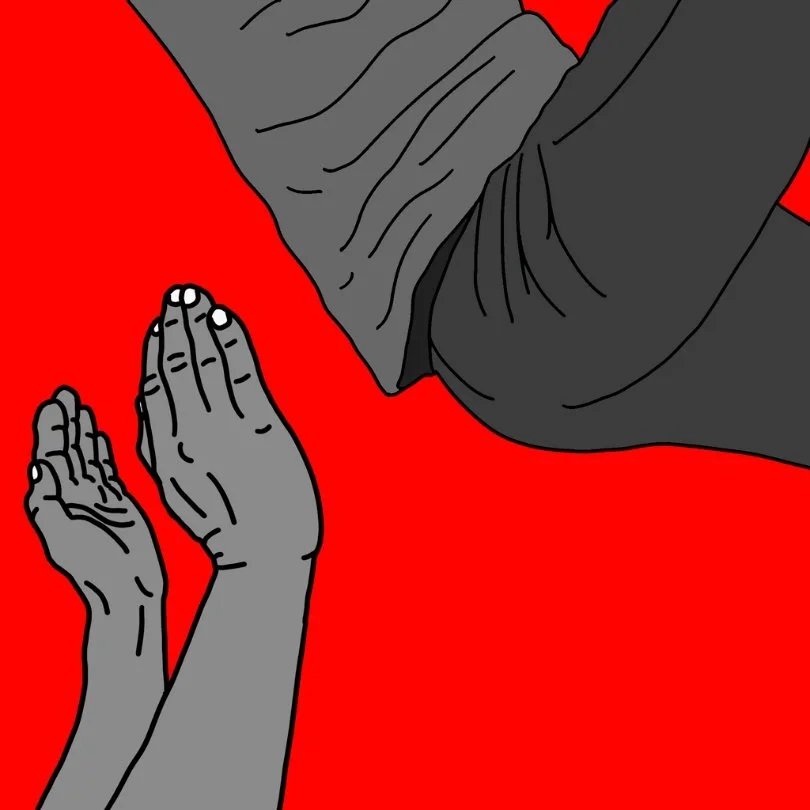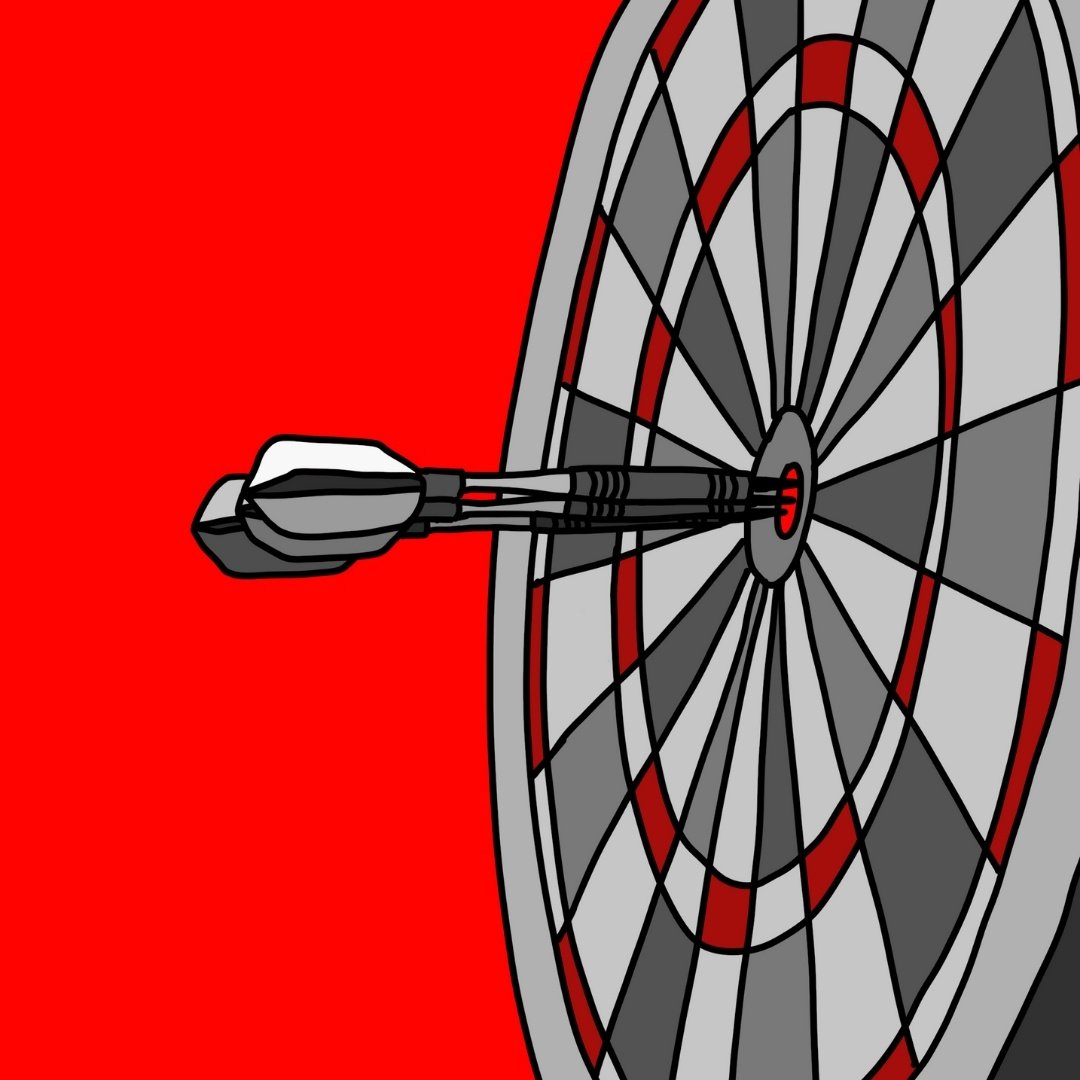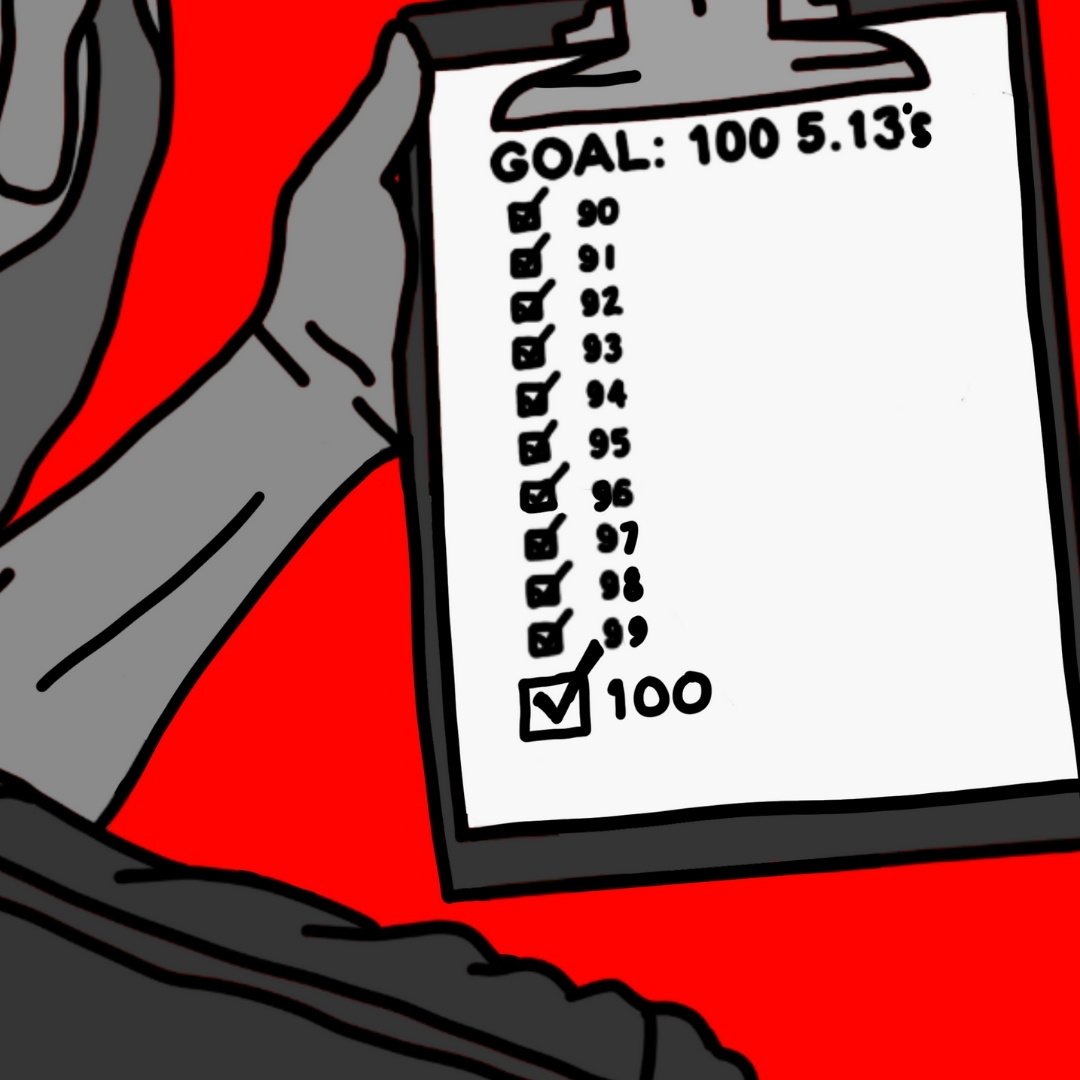One Move, Three Failures
Last month, I said that I felt like I had reached the deepest part of the Effort rabbit hole and could now branch out. That was wishful thinking.
Just this past week I climbed with three different people across three different sessions, all starting on the same mid 5.10, and all resulting in the same (but slightly different) issues. It was a minor hurdle, frankly — one easily passed by in just a few attempts — but also one that proliferates so much of our climbing.
It also illustrates an interesting connection to several ideas I’ve been playing with recently.
SCENARIO:
The first 4 or 5 bolts of this warmup are very easy climbing up a slabby and juggy right-leaning flake to a ledge that you can stand on. From here, the bolts angle to the left across a steep wall, creating a real sense of exposure the second you step off the ledge. The holds, while still good, are no longer jugs. Two finger pockets, a slopey flat hold, and a slightly incut three-finger get you setup for a big move to a wide pinch. The next hold is a jug that you take with your left hand. You bring your right hand to an undercling immediately beneath the jug. It’s not a great hold until you build your feet high, at which point it becomes a mini jug. You then stand to a bucket with your left hand. I’d call this move position intensive - it’s easy to get wrong if you try to climb it straight on or by keeping your body low.
This is where the issues arose.
CLIMBER ONE:
Having not climbed much for many months, she was already feeling nervous. But physically she is plenty strong. After working through the exposure in stepping off of the ledge, she got to the undercling move without too much trouble, touched the undercling a few times, and dropped off.
“That was hard!”
“How do you know? You didn’t actually try it.”
“Well, it felt like it would be hard.”
When she committed to trying the move, she did it first try. In fact, she never fell on this move. It wasn’t actually hard for her at all.
CLIMBER TWO:
Coming off of an injury, she was climbing with a little trepidation, but got to the ledge with no problem. Surprisingly, the sudden exposure didn’t seem to be much of an issue. She tried the sequence that Climber One had used, but didn’t like it and found a different way that added moves but also added security. When she arrived at the undercling, she touched it and immediately deemed it too difficult.
She began to search for other options, trying a few different moves but always coming up short. When she finally committed to the undercling, she did the move with what seemed like ease. Still, she tried other options. Eventually she finished the route using the undercling method.
After lowering, she commented that she still wasn’t sure that the undercling method was the best way, even though it was the only way she’d done the move, and multiple times at that.
CLIMBER THREE:
Having recently climbed his hardest grade – and planning to try an even harder grade on this day – the warmup was over two full number grades below what he can climb. He was in total control until he got to the undercling move. He grabbed it several times trying to find the good spot, kept his feet low, and lunged. I honestly don’t remember if he did the move or not on that first try. What I do remember is that it didn’t look easy, and afterward he repeated the move several times, trying to work out why it felt so hard to him.
By my estimation, when done well, this move is somewhere around 5.10a or b.
So why was it so challenging for three different climbers, all of whom have climbed multiple 5.12’s?
ANALYSIS:
If we use the Atomic Elements of Climbing Movement to break this down, it becomes simpler to understand. If you need a refresher of the Five Elements (Tension, Position, Rhythm, Commitment and Effort), you can watch this video. However, we won’t get all of the answers there — for that we’re going to have to consider a few other connections.
Like I already mentioned, this move is position dependent. We can start there — none of the climbers found the position on their first attempt. But that isn’t all it represents. Had you asked me when I first did the move if it was committing, I’d have said it wasn’t, but I’d have been wrong for several reasons.
I recently made a video about the fact that sport climbers often have trouble when faced with unstable moves. It’s easiest to imagine a big dynamic move in which you have to relinquish control in the middle of the trajectory. But this was different. This move wasn’t even 20 inches.
This was an unstable transition.
While taking the undercling high and walking the feet up, the instability is magnified. It’s not until you get stood up in the right position, leaning away from the undercling rather than relying on the downpull of the left hand jug, that it becomes stable again.
Climber One often relies on her power, so she’s accustomed to being unstable, but not in this manner. After the emotional toll of dealing with the exposure and then getting to an extremely stable position – left hand on a jug and huge feet — it was just too much for her to leave the security of the jug and commit to the instability of the high undercling.
It felt “hard.” It wasn’t, but it felt that way simply because she craved stability in that moment and was being forced to get unstable. This low commitment level bled into her effort (these two elements very often work in tandem) and she let go without even trying the move.
Climber Two doesn’t like to be unstable at all, but deals with it in a different manner. She looks for other options. More often than not, at the 12a level and below, there ARE other options. She plays to her strengths and finds things that fit her. This is good tactics.
Except, it isn’t.
On a warmup level climb, there are nearly always going to be several sequences that will work for you and feel roughly the same — provided you have a complete set of skills. So when you find a sequence on a warmup that feels harder for you than you expected, you should lean into it.
Instead we’ve been taught to leverage our unique abilities to avoid this kind of difficulty. In this case, a lack of position and commitment skills led to immediately opting for “better” tactics that reduces the likelihood of improving position and commitment skills – AND robs us of an opportunity to exercise effort in an unstable moment. When I watched her do that, I remembered I had a video script ready about how we often use tactics as an excuse for not trying hard. It’s up on the YouTube as of right now.
Climber Three came in with expectations, like we all do. While we may not realize it, those expectations are often about how much control we’ll be able to exert over this particular piece of rock. He knows that there are positions he has trouble with, but on this grade he’s not likely to encounter being forced into one of those positions. The transition felt unstable, he rushed it and tried to exert control in the way he understood when on a big hold — with muscle and not much concern for position.
Later in the day on a much harder route, he was having some of the same issues with unstable transitions — on much more difficult holds, resulting in unstable moves. Probably easier to learn how to confront that instability on the warmups, which he did a good job of.
It’s all ridiculously connected. The mental and emotional side. The tactical side. And of course, movement — the tension, position, commitment, effort, and rhythm.
In fact, I’m starting to think that effort and commitment will show up in big ways when we fully work out the Atomic Elements of Mental Focus and the Atomic Elements of Strategy and Tactics. At this point, how can it not?
I’ll see you again soon.
– Kris
Related Things to Stay Current:
Speaking of position, I made an in depth video on toe hooking. It’s a funny technique — people either are masters of it or suck at it. I’ve not met many apathetic toe hookers.
I also recently put out a video about the three types of climbers when it comes to effort. We all land somewhere in there, but one category is nearly always better at climbing than the other two. Where do you land?
A lot of my own effort recently has been on my climbing history podcast, Written In Stone. My recent Snowbird episode resulted in uncovering the video of the finals of Snowbird. It didn’t exist on the internet before this, but I’m glad it does now. Being able to compare high level climbers on the same route from 1988 is fantastic. Go watch it.
Don’t forget! If you aren’t on the email list for THE CURRENT, you won’t get the email next month. Make sure you’re subscribed HERE.



















